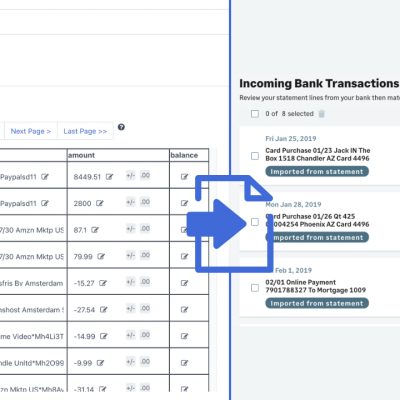Importing bank statement transactions is straightforward when you set up bank feeds on your accounting software or if you can download a file directly from the bank’s website.
However, sometimes you need to know how to import bank statements into Sage from old bank transactions from a few years ago or maybe you only have PDF or scanned copies of the statements.
As a busy professional, you don’t have the time to manually enter all this information. Thankfully, there’s a better way. You can use DocuClipper to automatically import the bank statements into Excel or your accounting software.
Harnessing AI for Easier Accounting – Your Go-To eBook!
Step 1: Select Your Statements
Click on “Bank and credit card statements”.
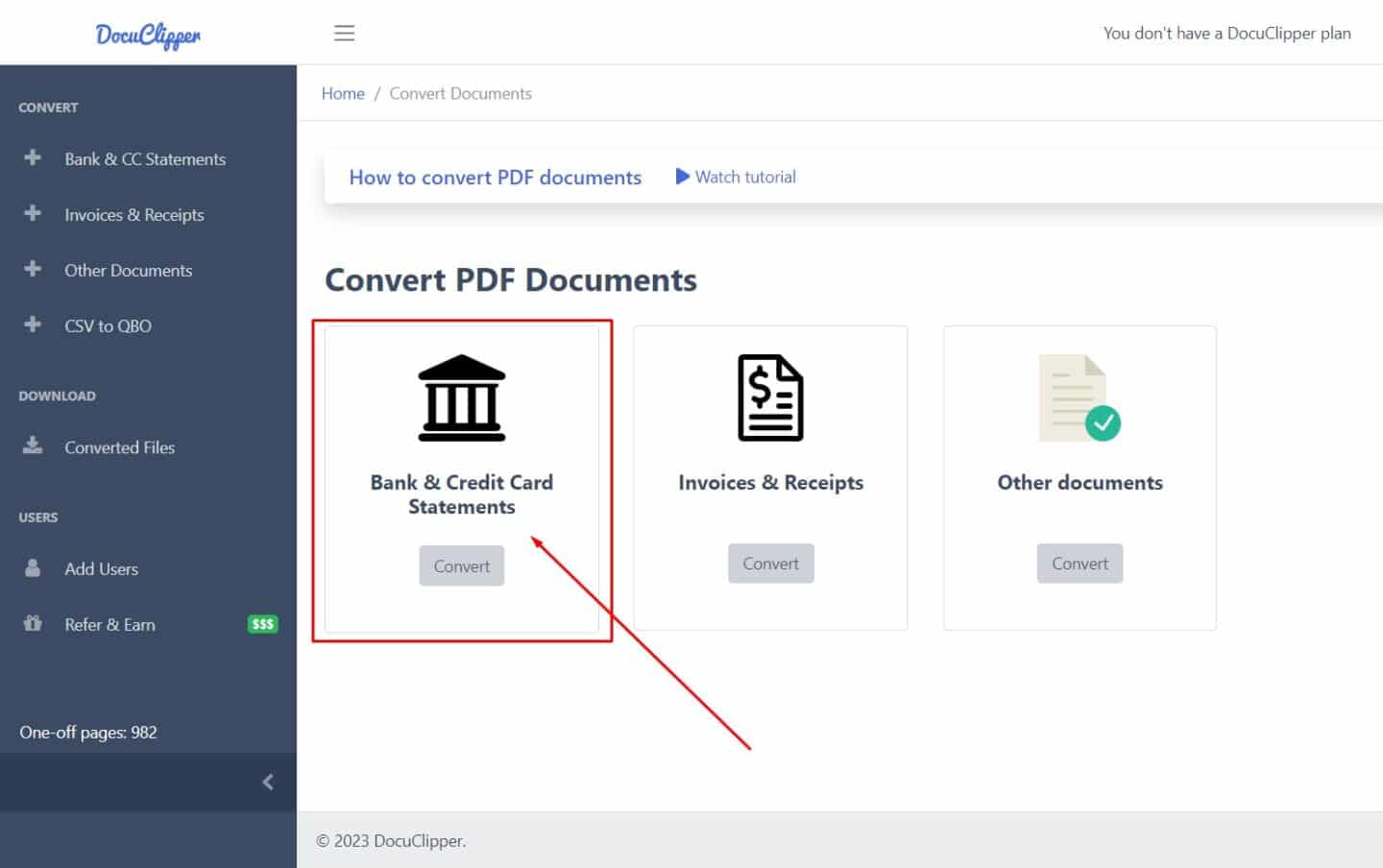
Drag and drop one or more statements. DocuClipper OCR Bank statement technology works with any text or scanned bank statement. It uses Optical character recognition technology to be able to read scanned statements. You can process multiple statements at the same time.
Click on convert.
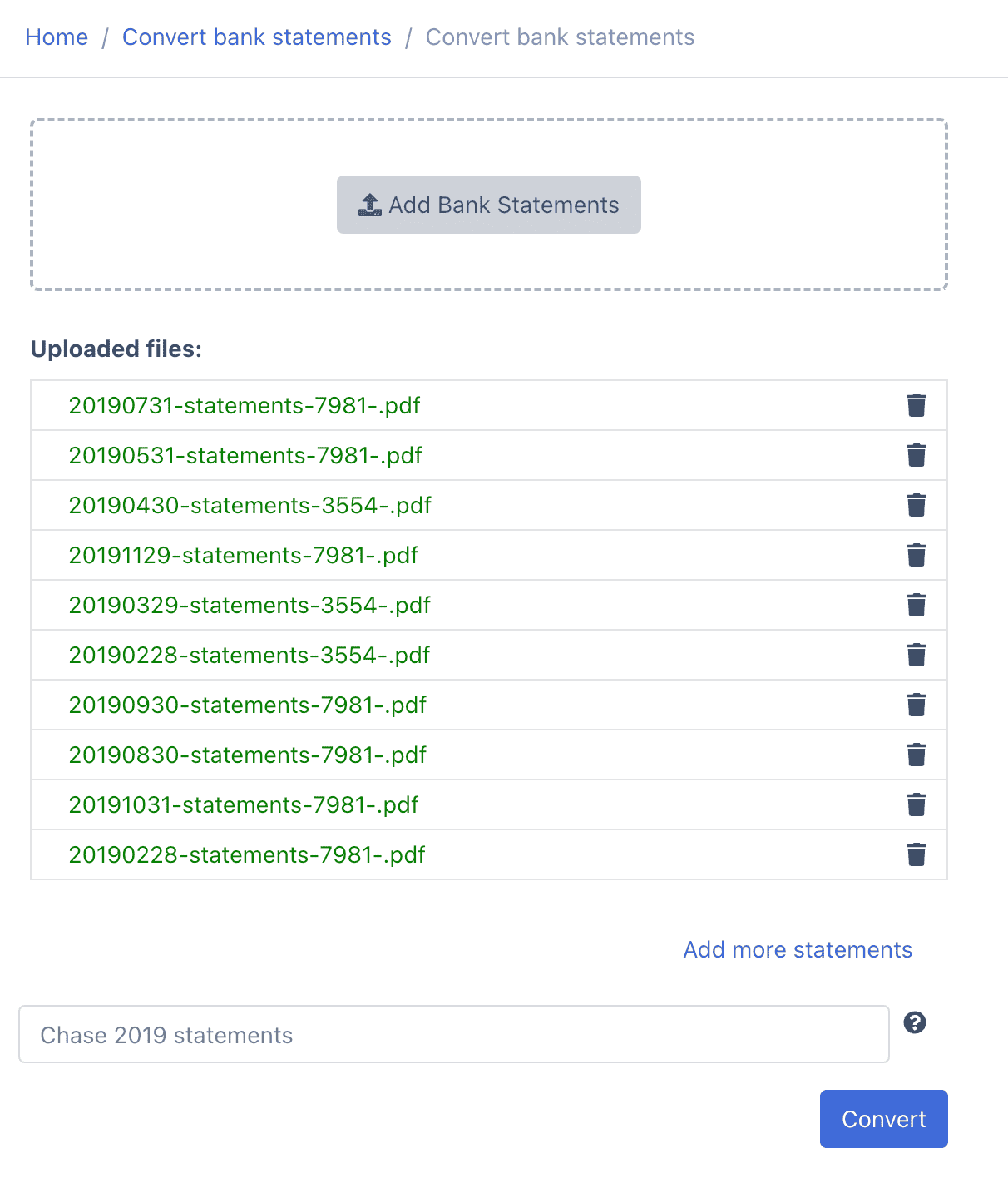
Step 2: Transactions Are Extracted Automatically
DocuClipper Bank Statement converter extracts all the transactions, creating a comprehensive bank extract that includes other data like balances, dates, account numbers, etc.
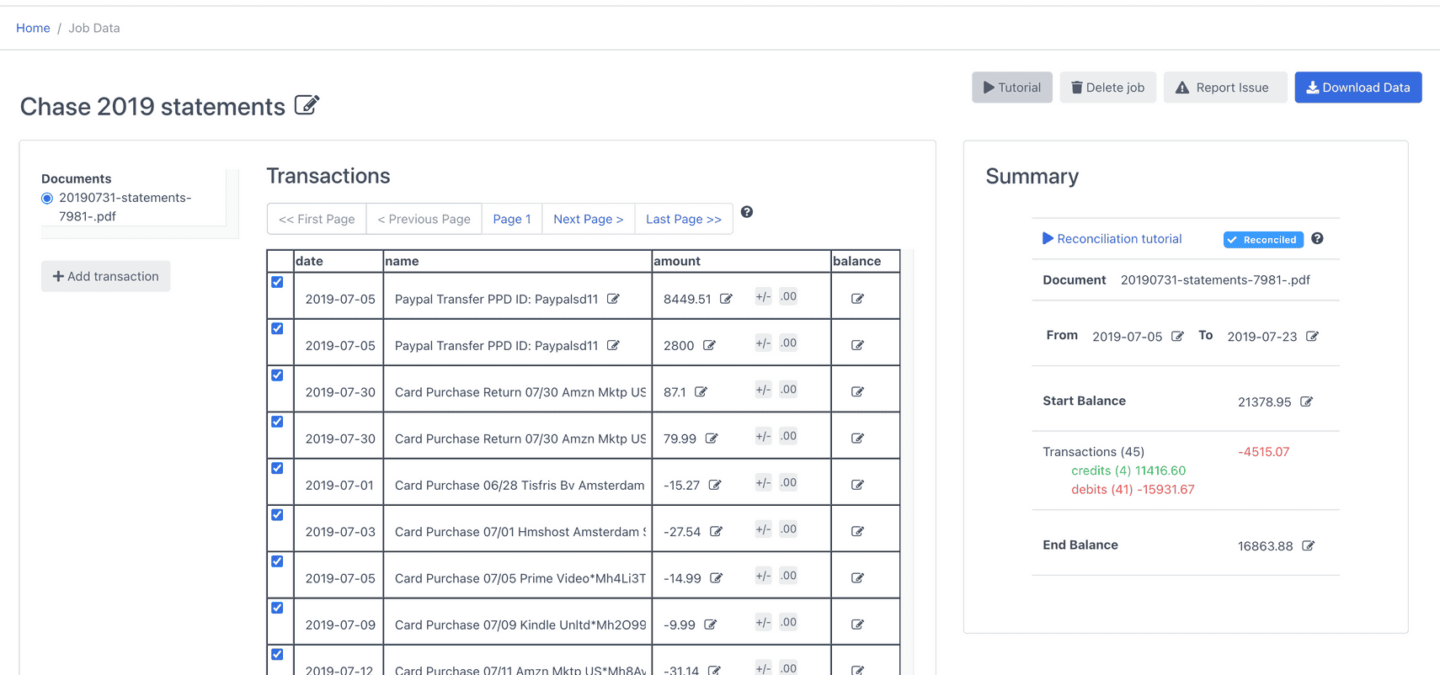
Step 3: Reconcile Bank Statements
The next step is to reconcile bank statements.
DocuClipper bank statement reconciliation compares transaction totals to summary information on the statement. If everything checks out, the statement is identified as reconciled, saving you time and manual review. You can see the reconciliation status on the summary table (top right of the page).
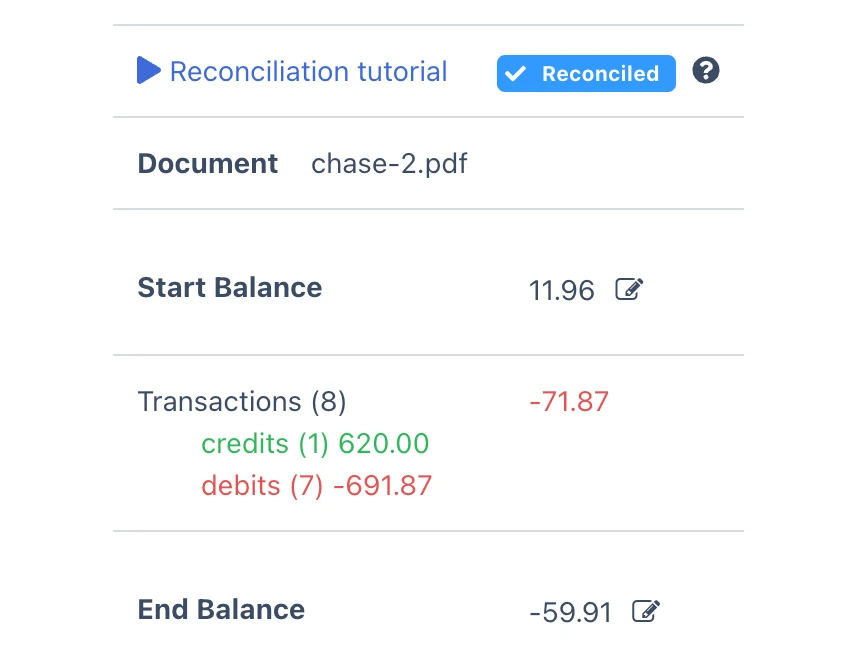
Here’s a video showing how to reconcile the statements:
Step 4: Download a Sage CSV File
Click on “Download data”. Select “Sage Cloud CSV” as the output format. Click on “Download Data” and the spreadsheet will be downloaded to your computer.
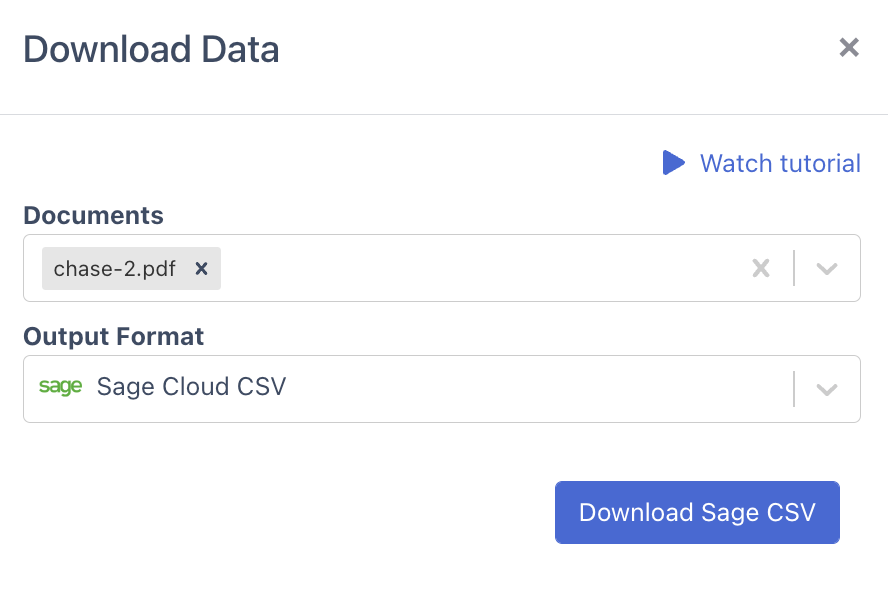
Step 5: Upload Your File Into Sage
Go to Banking. Select the account you want to import transactions to.
From Actions select the drop-down arrow and Import statement.
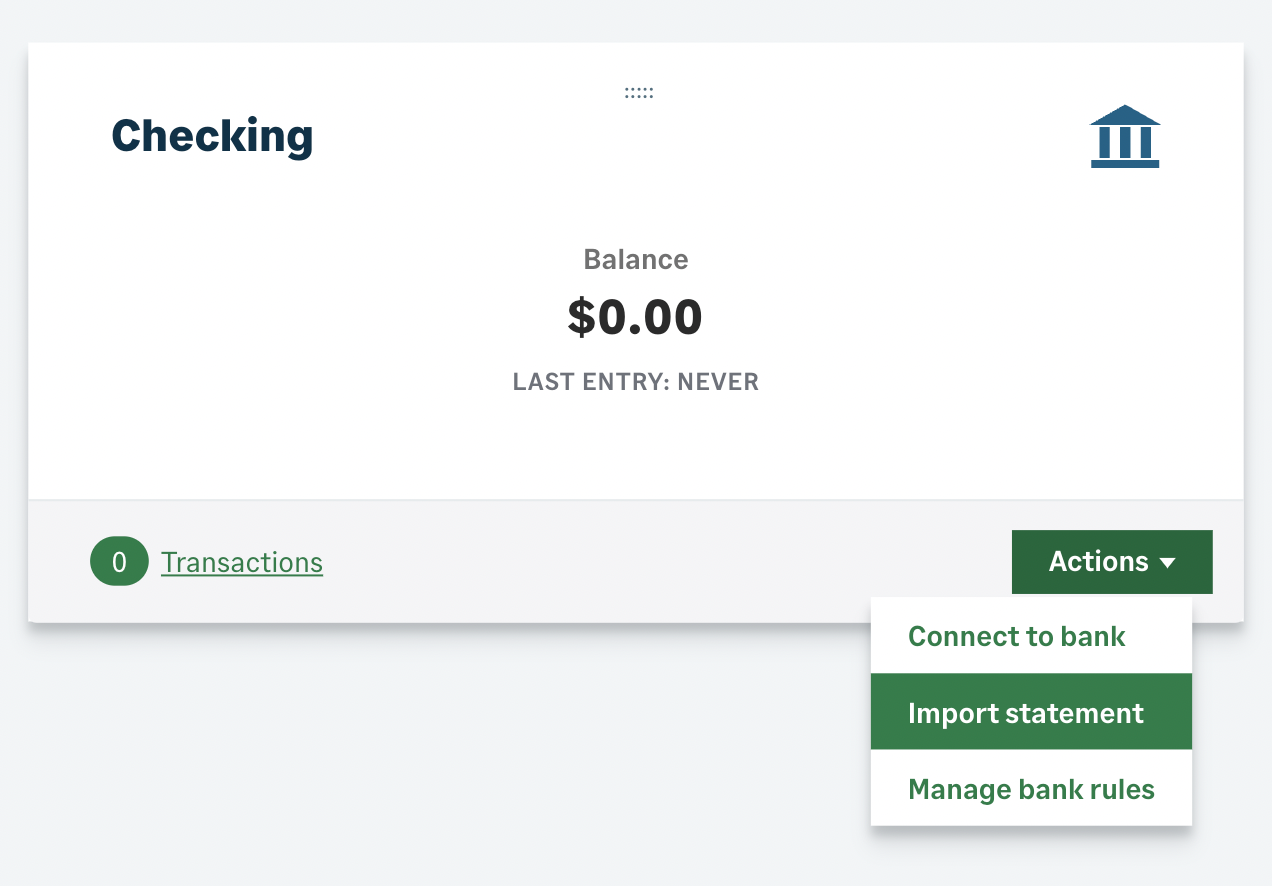
Set the file type to CSV 3 columns.
To add the file you can either: Choose Select file and find the bank statement file on your computer. Select Open to add the bank statement. or Drag and drop the file.
Select the date format used in your file so we can process it correctly. Choose either:
Day, month, year
Month, day, year
Year, month, day
Add a comment to help you identify the import later.
Select upload file.
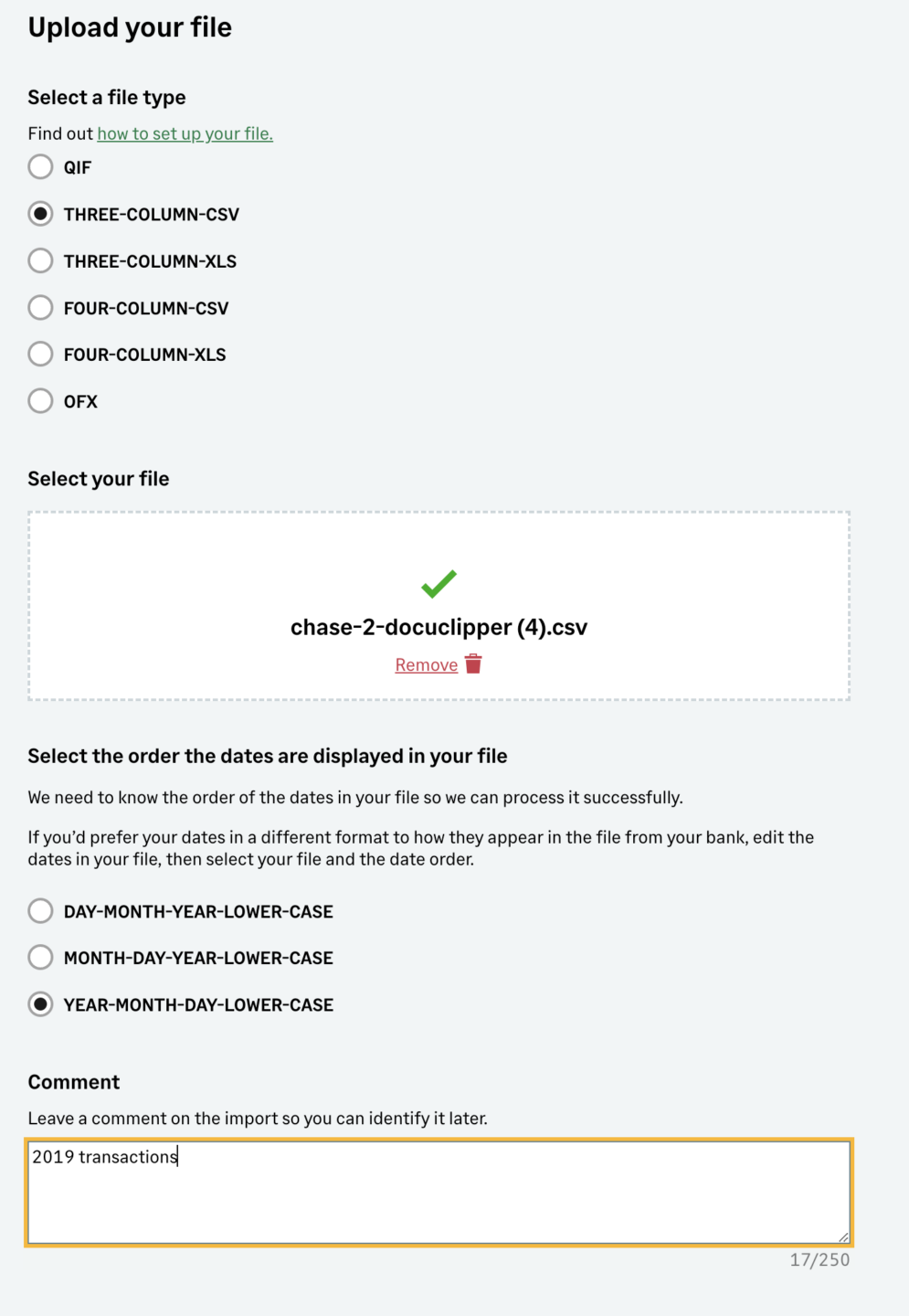
Step 6: Verify Transactions
After the file upload, you need to tell us which transactions show:
- money coming into the account
- money coming out of the account
To help with this, one of your transactions will be displayed on screen. You need to confirm your transaction as either money in or money out of the account. We will apply this rule to the rest of your transactions.
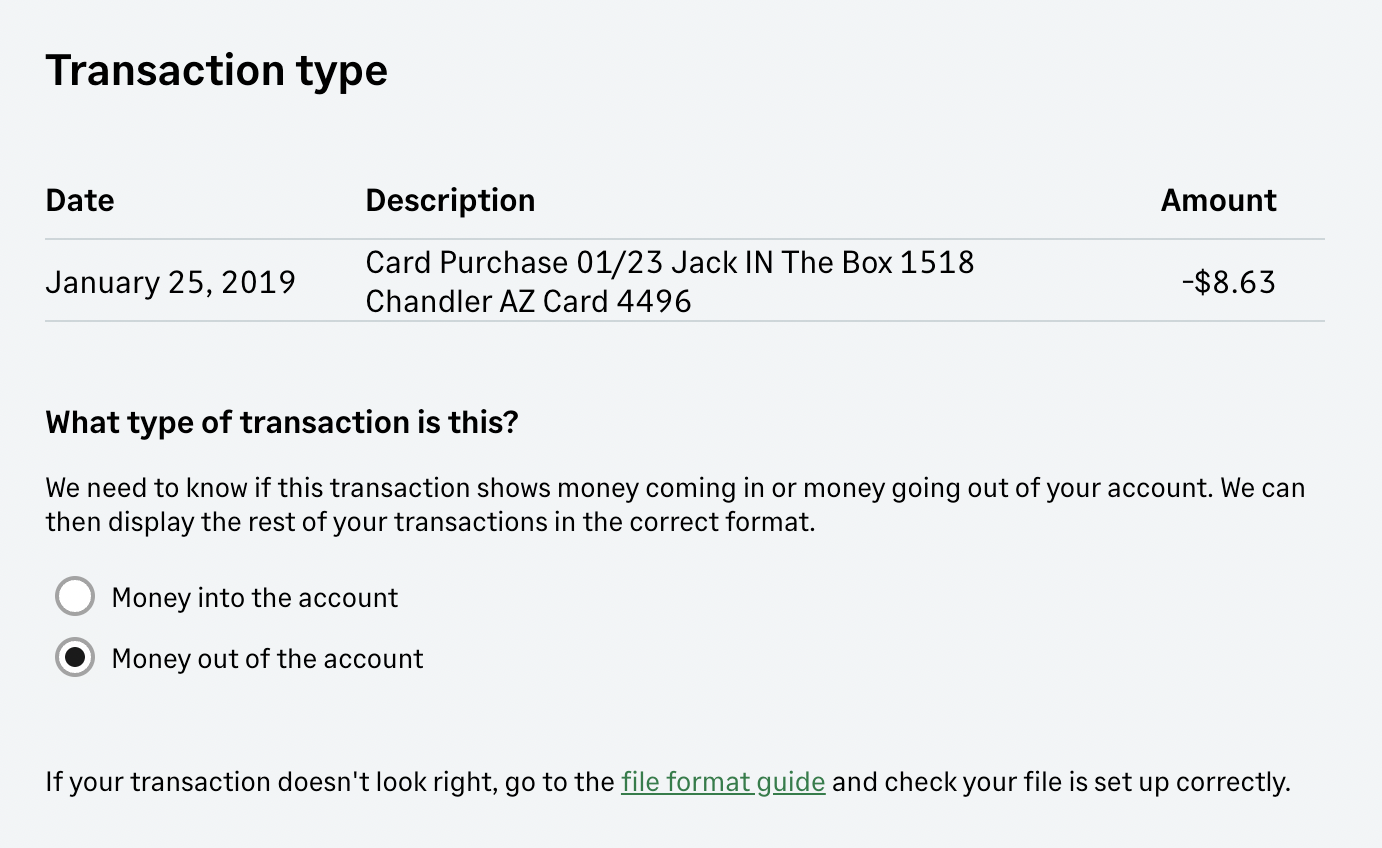
Step 7: Review Transactions
All your transactions will be listed and shown as either money in or money out of the account. If there are errors with the way these transactions are categorized, you can go back to the Verify screen.
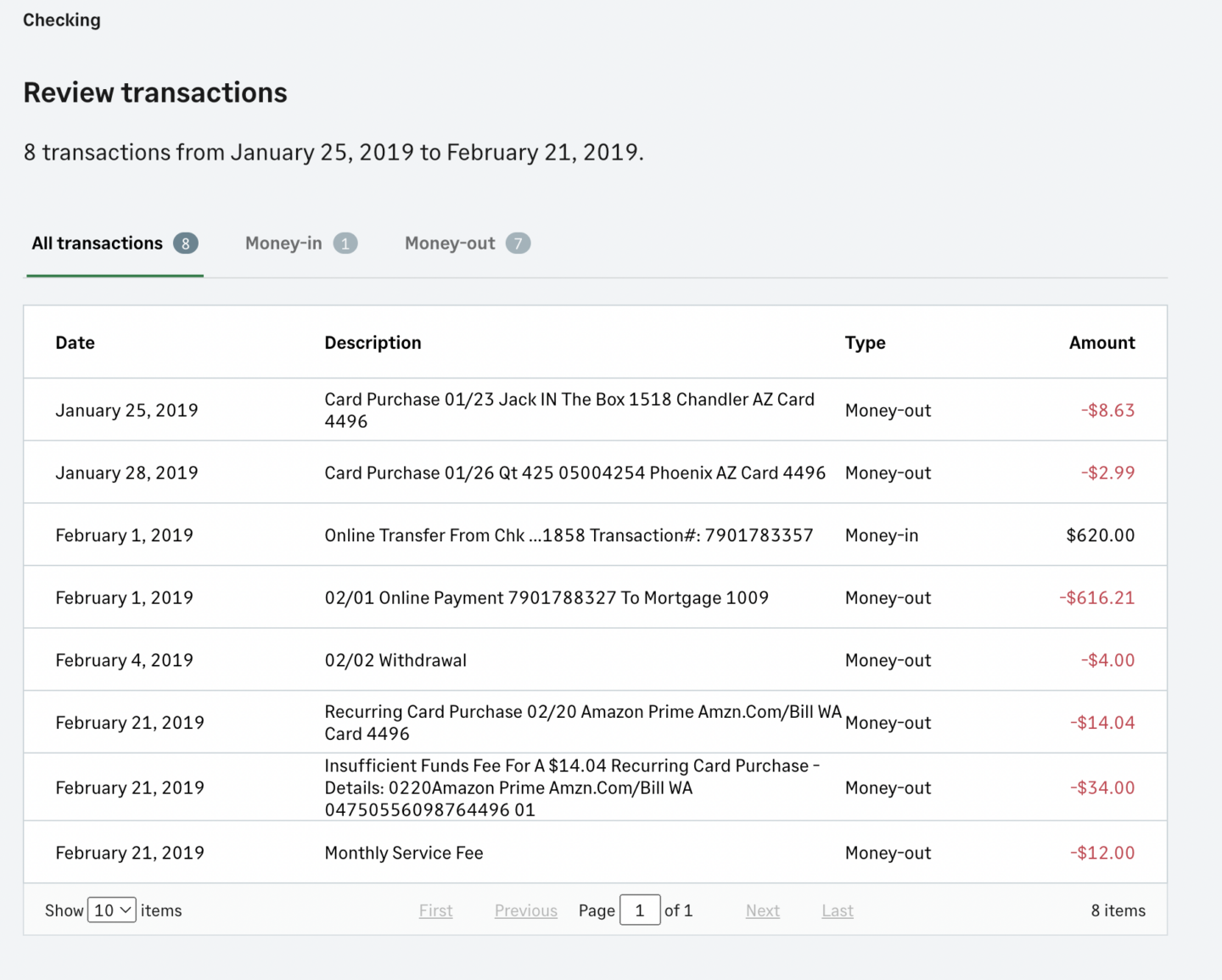
Once you have reviewed the transactions select Import transactions. You will be taken back to the Banking screen. Once the transactions have been imported into your account, they will show on your banking tile.
Review bank transactions The number of imported transactions from your statement are shown on the Banking page. Select the number to view all transactions on the incoming bank transactions page.
The Imported from statement message shows each transaction that has been imported from your bank statement.
Match, create or transfer transactions For each transaction you need to choose whether to:
- Match transactions to bank rules
- Match transactions to outstanding invoices, credit notes or receipts
- Create a new transaction
- Transfer from or to a different account
- Delete transactions you don’t want to import

Conclusion
In conclusion, importing bank statements into Sage doesn’t have to be a daunting task. With DocuClipper, you can easily convert and import your bank or credit card statements, whether they’re digital or scanned, and even multiple at a time. as it is one of the best bank statement converter software.
This powerful tool, utilizing advanced OCR technology, streamlines your financial management process, saving you time and enhancing your productivity. Take control of your finances today with DocuClipper and experience the seamless integration of your financial data into Sage.
Frequently Asked Questions about How to Import Bank Statements into Sage
In this section we answer some of the most commonly asked questions related to converting bank statements and importing them into Sage:
Can you upload a CSV file into Sage?
Yes, you can upload a CSV file into Sage. This function is built into the software to make it easy for users to import bank statements. After converting your bank statement into a CSV format with a tool like DocuClipper, you can import it directly into Sage for further processing.
How do I import bank statements into Sage
Importing bank statements into Sage is a straightforward process when you use a tool like DocuClipper. First, convert your bank statement into a Sage-friendly format like CSV. Then, in Sage, go to Banking, select the account you want to import transactions to, and from Actions select Import statement. You can then upload your converted bank statement file.
Can you Import PDF bank statements into Sage?
While Sage doesn’t directly import PDF bank statements, you can use DocuClipper to convert PDF bank statements into a format that Sage can process, like CSV. DocuClipper uses Optical Character Recognition (OCR) technology to accurately capture data from your PDF bank statement. You can then import this data into Sage for seamless financial management.
Can DocuClipper convert any bank statements?
Yes, DocuClipper can import digital and scanned statements from any bank into Sage.
Can DocuClipper import credit card statements into Sage?
Yes, DocuClipper can import any bank or credit card statement into Sage.
Can DocuClipper import scanned bank statements?
Yes, DocuClipper uses Optical Character Recognition (OCR) bank statement technology to import any scanned bank statement into Sage.
Can DocuClipper convert several statements at the same time?
Yes, DocuClipper can convert as many statements as you want in a single job.
